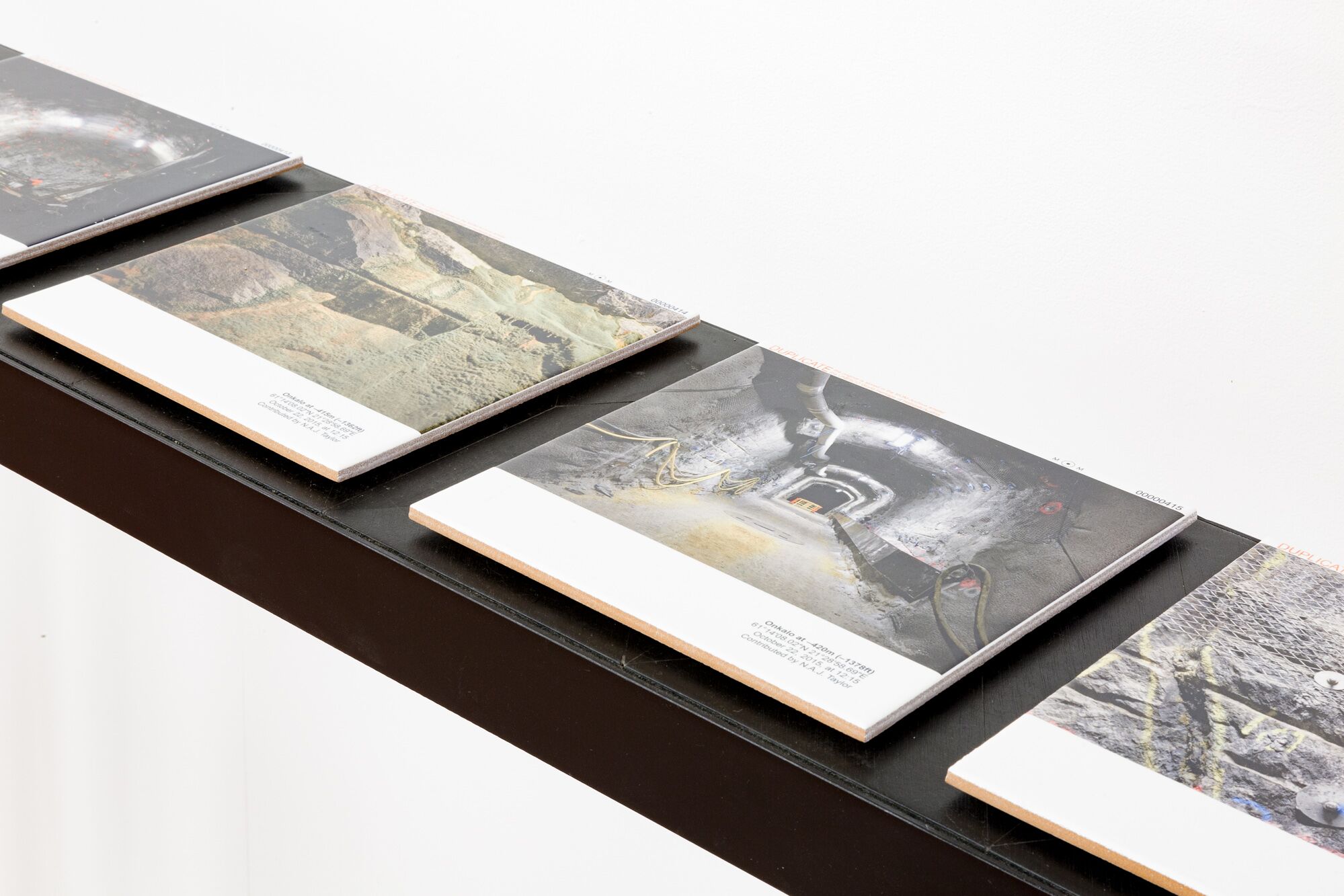
This project asks how and why the archives of environmentally remediated uranium mining and contaminated sites are managed over immediate, intermediate, and possibly even far-future (e.g. 10,000 or more years) timeframes. It does so by engaging STEM-based collaborators from Environmental Engineering with both knowledge and practical experience of the legal and regulatory landscape for archiving records, knowledges and memory (RK&M) relating to uranium extraction, as well as its contamination, remediation and waste management in the Australian and international contexts.︎
Principal investigator: N.A.J. Taylor︎
Co-investigators: Chu Xia Lin (Deakin), David Lowe (Deakin), Emily Potter (Deakin), Paul Brown (UNSW) and Gavin Mudd (RMIT)
Sponsor: Deakin University’s Science and Society Network︎
Funding: $3,000 (internal)
Key output: a literature review for an Australia Reearch Council grant proposal

The Atomic Photographers Guild is the pre-eminent collective dedicated to visualising all aspects of the nuclear age. Formed in 1987 by Robert Del Tredici, the Guild has since amassed an archive of photographic negatives and prints from more than forty photographers across seven decades. The collection begins with the world’s two first atomic photographers: Berlyn Brixner, the United States’ government’s head photographer of the Manhattan Project, and Yoshito Matsushige, the only photographer to document the atomic destruction of Hiroshima from inside that city on August 6, 1945. Despite the significance of the Guild’s archive, the collection has yet to be formally catalogued and digitised.︎
Principal investigator: N.A.J. Taylor︎
Institutional partner: Atomic Photographers Guild︎
Sponsor: Australian Academy of the Humanities︎
Funding: $2,000 (external)
Key output: cataloguing and digitisation of the Guild’s Yoshito Matsushige, Beryl Brixner, and Robert Del Tredici archive︎
Principal investigator: N.A.J. Taylor︎
Institutional partner: Atomic Photographers Guild︎
Sponsor: Australian Academy of the Humanities︎
Funding: $2,000 (external)
Key output: cataloguing and digitisation of the Guild’s Yoshito Matsushige, Beryl Brixner, and Robert Del Tredici archive︎

Richard Routley/Sylvan is widely regarded as having pioneered the academic subfield of Environmental Philosophy. Less well known are his contributions to nuclear thought which were mostly self-published from his office in the 1970s and 80s. Through archival research, this project performs the most thoroughgoing investigation into Sylvan’s nuclear ethics and politics ever undertaken.︎
Principal investigator: N.A.J. Taylor︎ Institutional partner: John Denis Fryer Memorial Library of Australian Literature︎
Sponsors: The University of Queensland and Deakin University’s Centre for Contemporary Histories
Funding: $20,000 (external + in kind) + $7,500 (internal)
Key outputs: a monograph and companion Omeka digital exhibition︎

People tend to think of "harm" as limited to the individual human body or psyche. However, nuclear harms violate not only the human body, but also the biosphere on which all life depends. Despite this, ethical thinking on the nuclear age remains human-centred. To render these human-biosphere connections visible in nuclear discourse, this project problematizes Andrew Linklater's efforts to globalise the liberal harm principle by (re)constructing the Antipodean nuclear philosophy of the late environmental philosopher, Richard Routley/Sylvan, through archival research.︎
Principal investigator: N.A.J. Taylor︎
Institutional partner: John Denis Fryer Memorial Library of Australian Literature︎
Sponsors: Australian Federal Government and The University of Queensland
Funding: $110,000 (external)
Key output: an award-winning doctoral thesis︎

The question of whether and how to communicate the problem of nuclear harm into the far-future to avoid intrusion is a vexing one. Following a film series and public dialogue, the decision was made to, first, print a handful of photographic images taken inside the Onkalo facility on stoneware ceramic, and, second, to deposit those tablets inside saliferous (i.e., flowing) salt deposits dating more than forty million years old in Hallstatt, Austria. The stoneware medium and salt storage method promises to preserve the images for at least 10,000 years.︎
Principal investigator: N.A.J. Taylor︎
Sponsors: Sterling Archer; Bob and Wendy Ashcroft; Alex Bagg; Ellise Barkley; Jyoti Blenclowe; Jessie Boylan; Paul Brown; Chris Bunting; Anthony Burke; Richard Butcher; Elliot Chapple; Ruth Charters; Daniel Clifton; Gavin and Jess Crawcour; Andrew Evans; Lucas Gibson; Julian Hewitt; Brodie Higgs; Avon Hudson; Andrew Hustwaite; Redi and Evald Koobak; Michael Lake; Luca Lana; Benjamin Law; Sophie and Tim Mattick; Cindy McGrath; Leeann McKnight; Chris Mosely; Geoff and Sue Nicholson; Andrew Ritchie; Jesse Sutton; R.H. and J.M.L. Taylor; Sue Wareham; Nicola Weston.︎
Funding: $6,500 (external)
Key output: an exhibition︎
Principal investigator: N.A.J. Taylor︎
Sponsors: Sterling Archer; Bob and Wendy Ashcroft; Alex Bagg; Ellise Barkley; Jyoti Blenclowe; Jessie Boylan; Paul Brown; Chris Bunting; Anthony Burke; Richard Butcher; Elliot Chapple; Ruth Charters; Daniel Clifton; Gavin and Jess Crawcour; Andrew Evans; Lucas Gibson; Julian Hewitt; Brodie Higgs; Avon Hudson; Andrew Hustwaite; Redi and Evald Koobak; Michael Lake; Luca Lana; Benjamin Law; Sophie and Tim Mattick; Cindy McGrath; Leeann McKnight; Chris Mosely; Geoff and Sue Nicholson; Andrew Ritchie; Jesse Sutton; R.H. and J.M.L. Taylor; Sue Wareham; Nicola Weston.︎
Funding: $6,500 (external)
Key output: an exhibition︎